Government-funded jobs have artificially fueled Australia’s jobs boom over the past two years.
As illustrated below by Alex Joiner from IFM Investors, around 80% of jobs created over the past two years have been in the non-market sector, which is reliant on government funding.
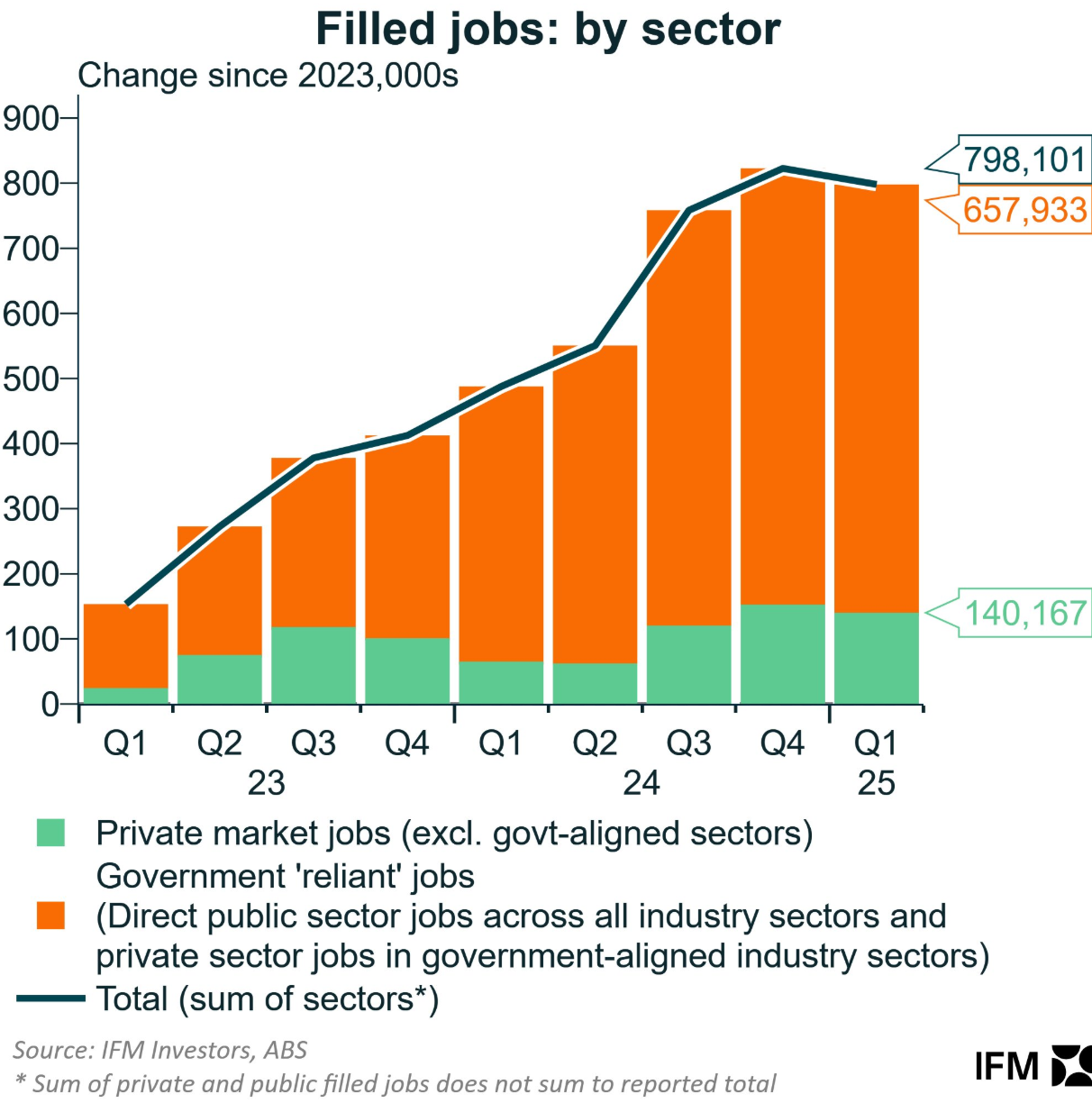
The non-market sector generated around 658,000 jobs between Q1 2023 and Q1 2025, compared to only 140,200 jobs created in the market (private) sector.
The increase in non-market jobs is the main reason Australia has an unemployment rate of only 4.3%.
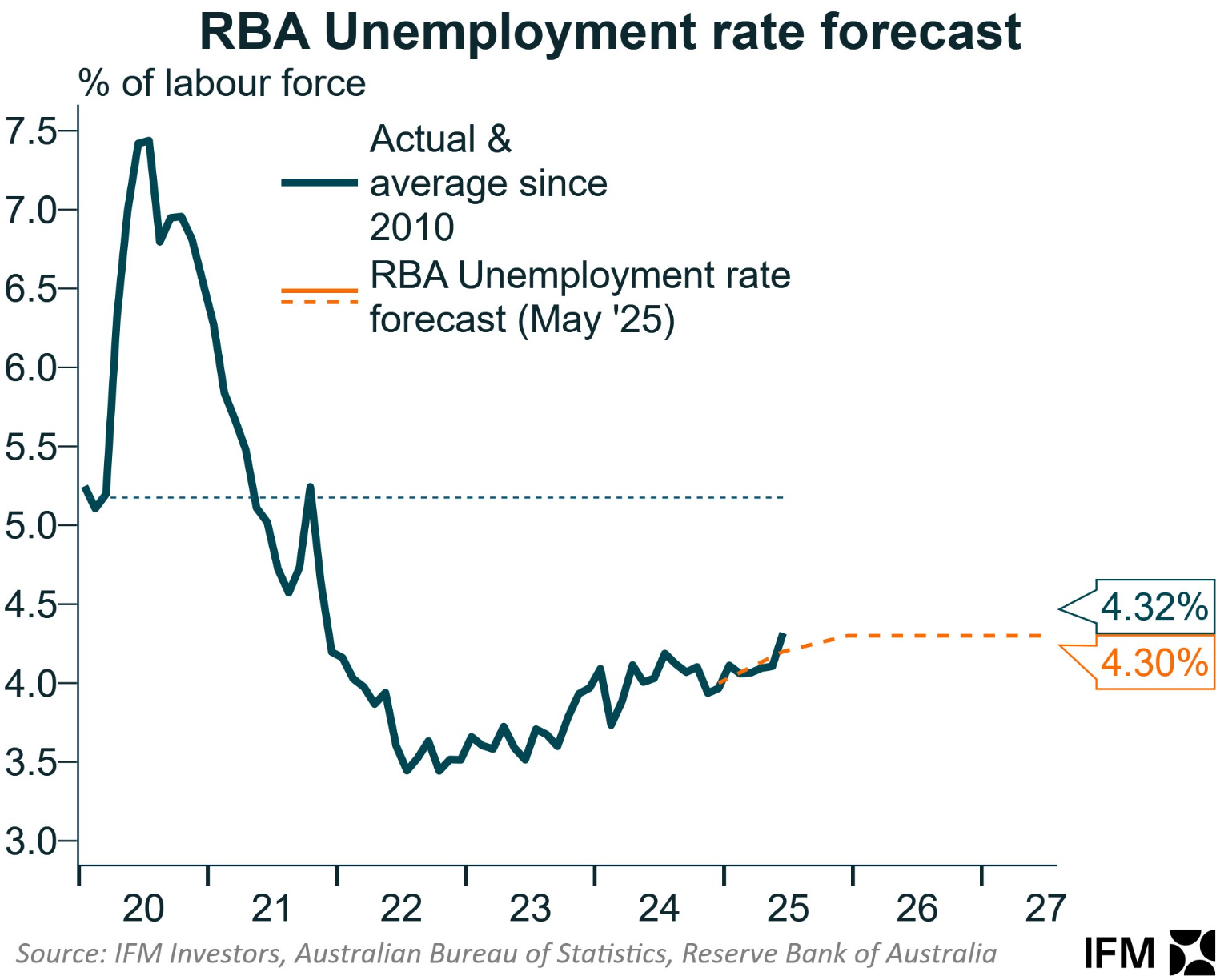
As illustrated above, the Reserve Bank of Australia (RBA) has foolishly forecast that Australia’s unemployment will remain at its current low level over the next two years.
The clear and present danger is that non-market job creation plummets (or the sector sheds jobs) and there is not an adequate handover to the private sector.
Given the strong growth in the labour force via persistently high net overseas migration, such a scenario would imply a sharp increase in unemployment.
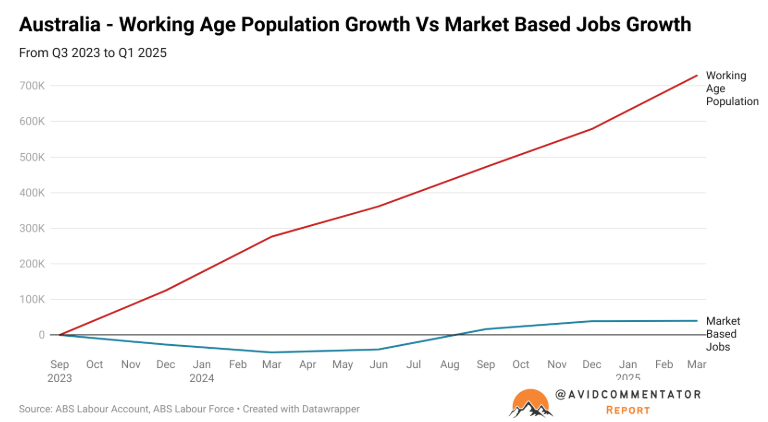
Already, the alternative indicators of the labour market are looking shaky.
Roy Morgan’s alternative unemployment rate, which considers anybody to be unemployed if they want a job but are not working, has shot up recently.
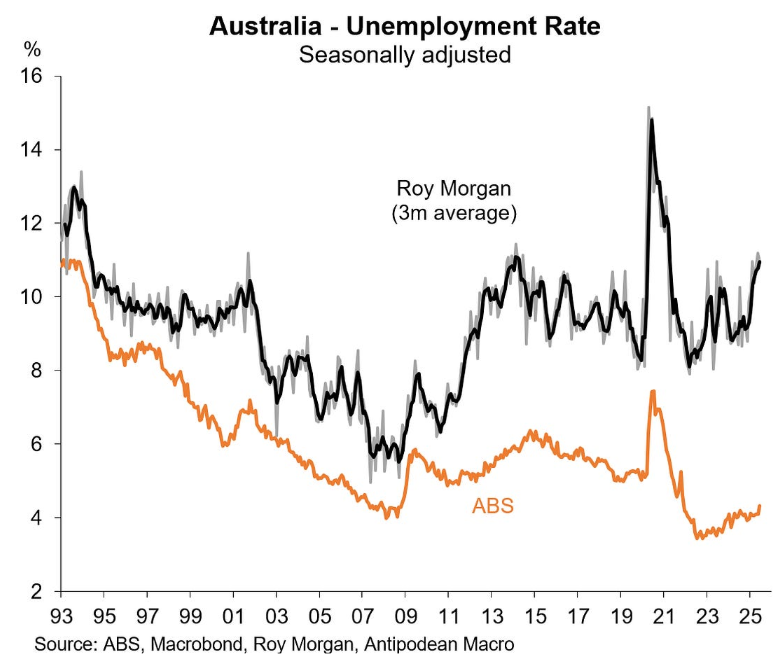
SEEK’s job ad and applications per job ad data suggest that the labour market is soft.

Jobs & Skills Australia’s internet vacancies index also points to higher unemployment:
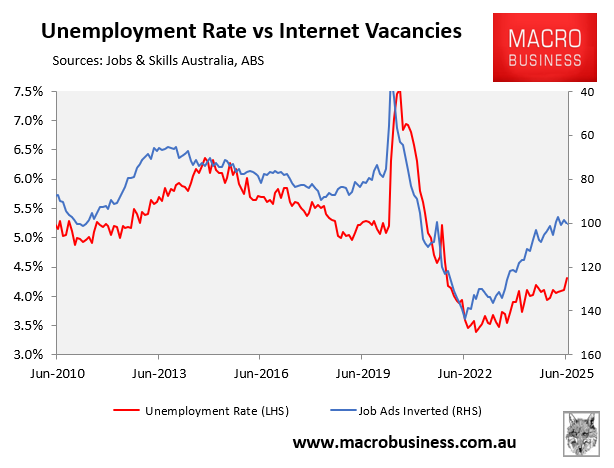
State and federal budgets are also stretched, leading to cost-cutting and austerity—neither of which is good news for non-market jobs.
For example, the Victorian government announced in its recent state budget plans to cut 2,000 to 3,000 public sector jobs, with estimates suggesting that the government may lay off up to 6,500 workers.
The NSW government last week announced that more than 1,500 roles will be cut in a fortnight.
Federal government departments are also reportedly facing “funding cliffs” that will result in thousands of job losses.
For example, the Health department stated its budget is forecast to decline from $1.69 billion in 2024-25 to $893 million by 2027-28, while the Energy department forecast its funding would fall from $357 million in 2025-26 to $180 million by 2028-29.
The worst of the likely budget shortfalls will take effect from 2026-27, when upwards of 100 programs will have their funding expire.
The federal government is also under intense pressure to trim the cost of the NDIS, which has been the main driver of the massive expansion of non-market jobs.
Australia’s non-market job boom is over amid the era of austerity.
With Australia’s private sector failing to fire and the government continuing to import hundreds of thousands of migrant workers annually, there is a real risk that Australia’s unemployment rate will soar.

